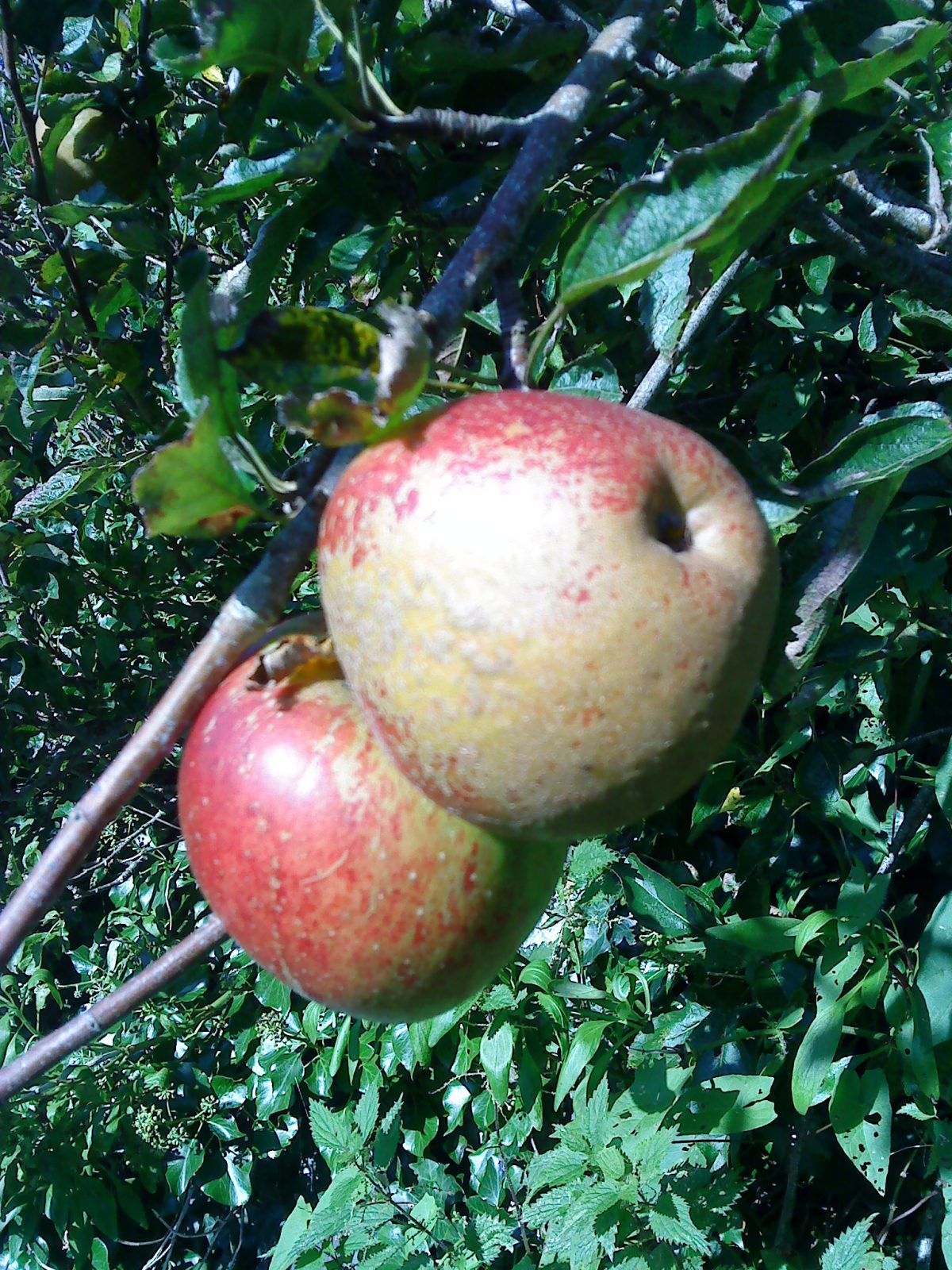Enjoy these unusual Cornish apples

October 23, 2009
The dessert apples in Camel CSA’s vegetable boxes this week are a delicious old English variety called Lord Hindlip. They were planted in our garden at St Mabyn some 40 or more years ago by Percy Dunstan, a smallholder. His daughter, who still lives in the village, says they were his favourite.
Pomona Publications, which specialises in fine botanical art prints, describes this attractive-looking apple:
“A seedling from the Worcester estate of Lord Hindlip, introduced by the Watkins nurseries of Hereford in 1896. Lord Hindlip has beautifully coloured skin and a fine physique, broad shoulders tapering to a narrow base, with juicy flesh and a refreshing, tangy aromatic flavour.”
Rosanne Sanders, in her classic book The English Apple, admires its particular taste:
“The fruit is a very late dessert type, with rich and distinctive vinous flavour. Picking time is early to mid October and its season is December to March.”
Storage
Lord Hindlip is a late variety that benefits from being kept for a couple of weeks before eating. (But I suggest you try one and decide for yourself.)
From my own experience, I recommend Rosanne Sanders’ method of storing apples in a clear plastic bag:
“The material maintains high humidity and so prevents the fruits from shrivelling too quickly. However, the apple must be allowed to breathe.
The skin of the bag should be perforated with a hole the diameter of a pencil for every pound of fruit, and the top of the bag folded over rather than sealed. Use clear polythene so that the apples can be seen and any rots removed if necessary.
The required conditions of coolness, darkness and ventilation still apply.”
We’ll be including the remainder of the Lord Hindlip harvest in the apple juice we’re going to produce on Camel CSA’s site at St Kew Highway on Sunday. But we could do with some more. So please – if you know about any surplus apples going begging, do let us know.


